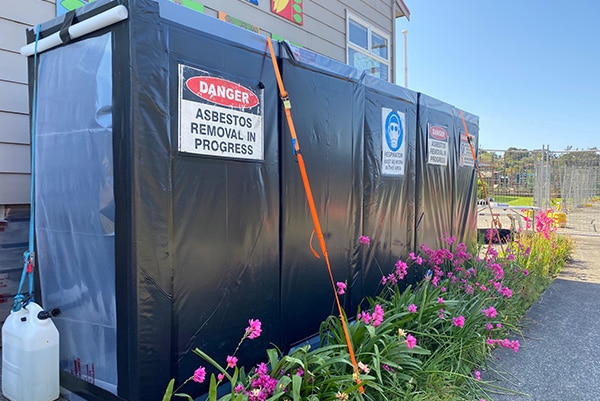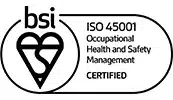
Want to read about it offline? Download the PDF here
What is it?
Asbestos, a naturally occurring fibrous silicate mineral, was the material of choice for popcorn ceilings (also known as stucco or textured ceilings), until the substance was banned as a product due to the significant health hazard in 1978.


Manufacturers switched to paper fiber that year, but suppliers continued to sell existing stores of asbestos-laced material.
That means that popcorn ceilings installed as late as the mid-’80s could contain asbestos, and, when disturbed, disperse microscopic fibrils known to cause lung-scarring illnesses and even lung cancer if inhaled.
“Popcorn ceiling,” or “Mr Fluffy,” as it was typically known, contained 1 to 10 percent asbestos.
The ceiling will not endanger your health as long as it remains completely undisturbed or properly encapsulated. Yet in the long run, having it professionally removed is the safest choice.
The Conqra Enviro Solution
Asbestos Textured Ceilings must be undertaken as a Class A Removal and has very defined steps that must be adhered to mitigate the risks while undertaking this operation.

Once a date has been agreed by the client and Conqra Enviro as to when the Textured Ceiling will be removed. Conqra Enviro will then advise Worksafe New Zealand about the impending Class A Removal.
While we wait for the 5 day stand down time, Conqra Enviro develops an Asbestos Removal Control Plan (ARCP). This details the methodology as to how the asbestos will be removed from the area, and identifies any Hazards and Risks, plus controls to ensure the risks are managed.
The next stage is to encapsulate the asbestos removal site using 200> micron plastic. This includes setting up a 3-5 Stage wet Decontamination Unit and an NPU (Negative Pressure Unit) attached. We create an air tight enclosure and then test the integrity by completing a smoke screening test, this ensures there are no holes, allowing no fibres to escape, and it ensures the health and safety of everyone on site.
Once this stage has been passed by a 3rd Party Independent Assessor, removal can commence. Air monitoring will be conducted while the removal happens.
Once all the Asbestos Textured Ceiling has been scraped off and cleaned up (or cut and dropped) the Asbestos Assessor will check the removal area by Air Monitoring and Swabs.
After the area has passed as clear, the plastic enclosure can be dismantled and a final clean of the area can take place, ready for the final Inspection and the Clearance Certificate can be issued.
BEWARE: Asbestos hides in many places within your home.
Asbestos has been used in a wide range of building and household products.
If more than 10m 2 needs to be removed from a property, licensed asbestos removalists must complete the project.

Asbestos can be loosely or firmly bound.
In older homes, firmly bound asbestos may be found in:
- Exterior fibre cement cladding (AC or fibro) and weatherboards
- Artificial brick cladding
- Flexible building boards – eave linings, bathroom linings, cement tile underlay
- Corrugated cement roofing
- Flue pipes
- Architectural cement pipe columns
- Textured paint
- Vinyl floor tiles or coverings
Loosely bound or ‘friable’ asbestos was rarely used in domestic situations.
However, it is possible that loose asbestos fibres may have been used as:
- Insulation on hot water pipes
- Insulation in old domestic heaters
- Insulation in stoves
- Ceiling insulation products
As a guide, houses that were built:
- Before the mid-1980s are highly likely to have asbestos-containing products
- Between the mid-1980s and 1990 may have asbestos-containing products
- Homes built after 1990 are unlikely to have asbestos-containing products
If you find Asbestos in your home, or if you are unsure if it is Asbestos we advise you get it tested by a professional.
Contact Conqra Enviro and we will happily assist with the identification and removal of any Asbestos you find.
Found this information helpful? Download the PDF here



